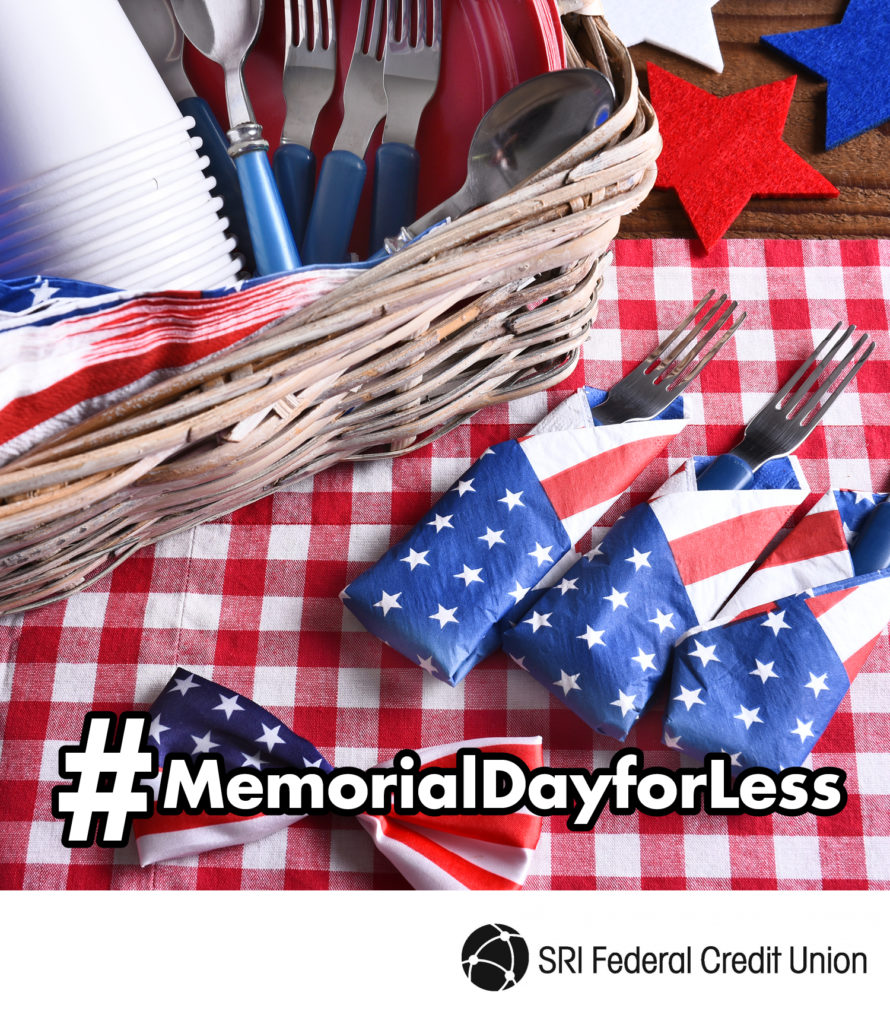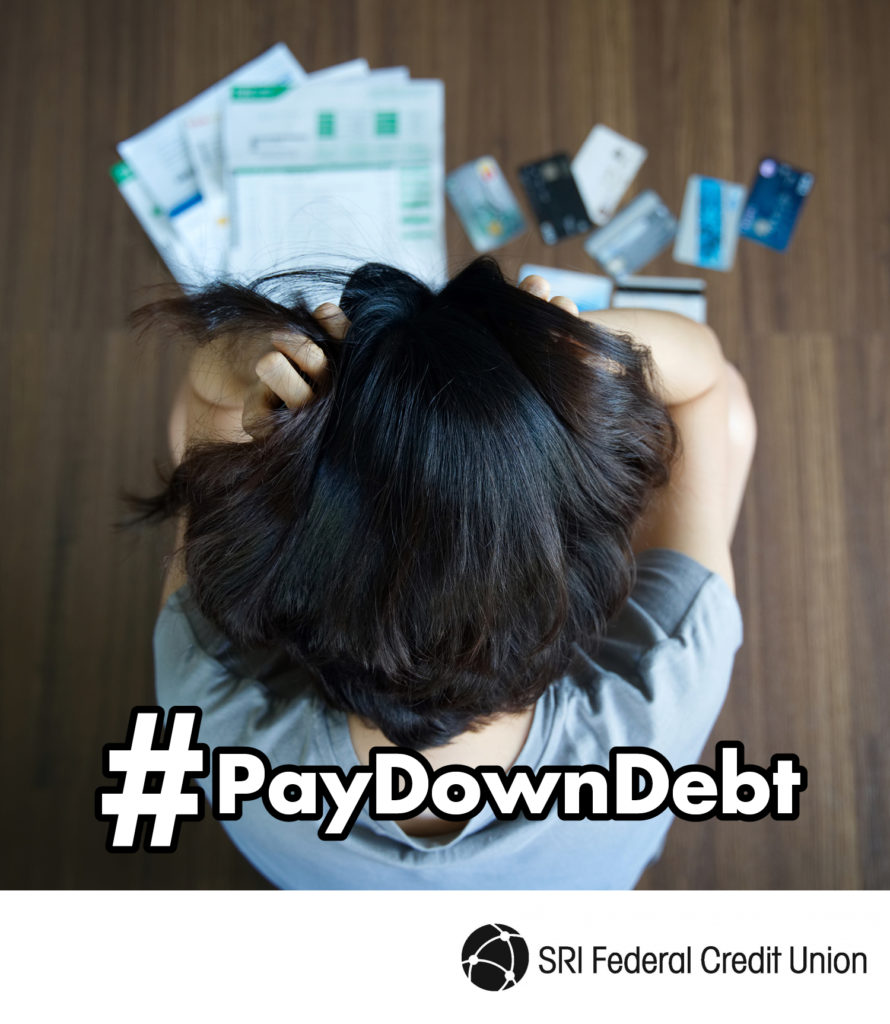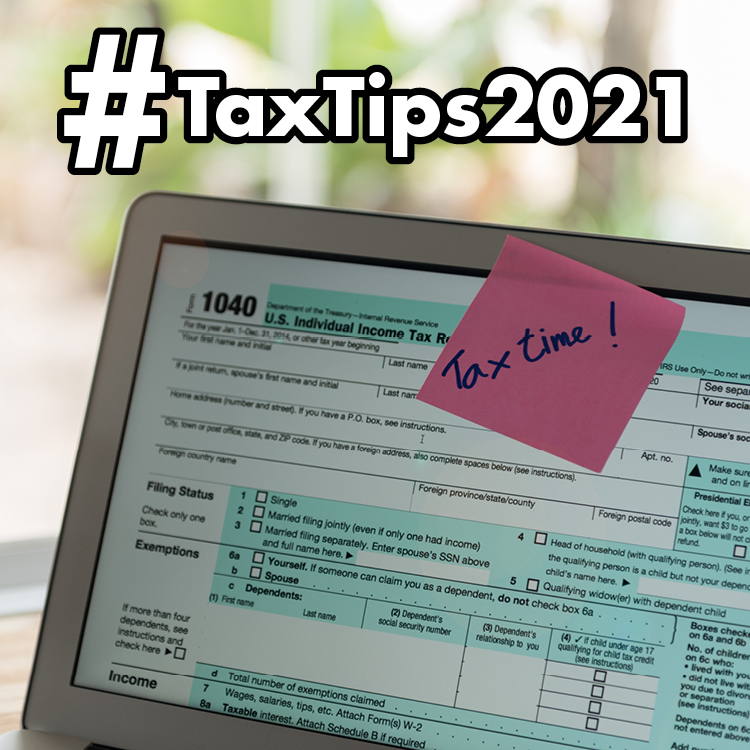Posts by Francisco Saenz
The Nissan Rogue – A Buyers Guide and Breakdown
The Nissan Rogue at a Glance:
- Vehicle type: AWD, FWD, 5-seater SUV
- Base price: $26,700
- Engine/transmission combo: 1.5 liter, VC-turbo, 3-cylinder direct engine hooked up to an Xtronic CVT
- Power: 201 horsepower @5,600 rpm
- EPA fuel economy: 30/37 mpg
Pros Cons Infotainment Safety features Interior Trim levels: If you’re looking to finance an auto loan for your new car, look no further than SRI Federal Credit Union! Our auto loans offer low-interest rates (click here for current rates), a choice of term lengths, and a quick approval process. Click here to apply or call 650-859-5477 to speak with a loan officer to get started or discuss available options!
How to Celebrate Memorial Day on a Budget
Celebrating Memorial Day can cost a pretty penny, but there’s no need to spend lavishly to have an epic holiday weekend. Here’s how to celebrate Memorial Day on a budget. 1. Hit the beach Get out to the shore at the first opportunity! The beach can provide hours of relaxation and fun for the entire family at little or no cost, depending on your location. Stock up on some inexpensive patriotic-patterned towels to make the day feel a little more festive. 2. Attend a local event There’s no need to travel far for a fun Memorial Day outing. Check out local online forums and newspapers to see what’s happening in your town. You’ll likely find a carnival, parade, concert and/or street fair that’ll give you some Memorial Day fun at no cost. As a bonus, local activities that do charge an entrance fee will often donate all proceeds to charity, so you’ll be paying it forward all day long. 3. Host a potluck If you’ll be hosting this Memorial Day, make it a potluck party. Ask each guest to bring one dish for a complete dinner that won’t cost anyone a lot of money. As a bonus, the menu is a lot more fun when it’s varied and prepared by lots of different cooks. 4. Go easy on the decor No need to blow a ton of money on making your Memorial Day celebration look festive. Spruce up the place with some red, white and blue balloons from the dollar store, find some patriotic banners and deck the tables with inexpensive and on-theme tablecloths, too. 5. Make a signature drink Instead of setting up a full bar, make one signature drink for the night. Festive and fitting for the celebration, this comes out a lot cheaper than springing for a full-blown bar. You can find some great ideas for your signature Memorial Day drink here. 6. Look for coupons Don’t go anywhere without first checking if you must pay full price. You can pick up some great discounts on restaurant meals, entertainment venues, and more at websites like Groupon.com. If you are a member of AARP or AAA, check to see if you can enjoy some additional exclusive discounts as well. 7. Host a DIY sports event For a fun and frugal alternative to the traditional Memorial Day BBQ, invite family and friends over to your place, or meet up at a park, for a day of sports and games. You can play flag football, soccer, have a tug-of-war competition or even drum up a full game of baseball. You can set up some light drinks and snacks, or ask your guests to bring their own for a truly cost-free day. 8. Visit historical sites What better way to spend Memorial Day than checking out historical attractions? Lots of historical sites, like the Gettysburg National Military Park in Pennsylvania, host free events in honor of the three-day holiday. This event, along with other similar events across the U.S., like the Annual Flag Planting Event at the San Francisco Presidio National Cemetery are a great way to honor the courageous men and women who have served and lost their lives for our country. 9. Rent a boat Enjoy a day out on the water at little cost by renting a boat from a nearby boat rental service or a private owner. Small boats, like kayaks and canoes, can cost as little as $30 for a few hours of use. Speed boats and pontoons will be pricier, but can also hold more people to share the cost. Bring along some snacks and drinks and good music for a fantastic day of water fun. 10. Participate in a race Joining a race can be an enjoyable and healthy way to spend your Memorial Day. Participating in a race can cost you as little as $50. As a bonus, lots of Memorial Day races donate all proceeds to organizations that help soldiers pay for expenses that are not covered under military benefits. You’ll be supporting our servicepeople while stretching those muscles! Memorial Day is always great fun, but it doesn’t need to cost a great deal of money. Use these tips to enjoy a memorable holiday weekend on a budget.
Step 5 of 12 to Financial Wellness: Practice Mindful Spending
Creating a budget and deciding to stick to it is easy; it’s actually carrying through on your plan that’s the hard part. For too many people, financial responsibility ends at having good intentions and real-life gets in the way of all well-laid plans. A large part of the discrepancy between what they want to do and what they actually do is caused by their failure to spend mindfully. When every indulgence and impulse buy is just a swipe away, it can be super-challenging to rein in that spending instinct – but it is possible. Here’s how to learn the art of mindful spending. Find alternative ways to de-stress Too often, people claim they need “retail therapy” and use it as an excuse to practice mindless spending. But choosing to turn to shopping for alleviating stress, dealing with a challenging situation or just to escape real life for a bit makes it very difficult to make smart, responsible choices. In addition, the bills, or debt that will likely accumulate as a result will increase stress levels considerably. Instead, it’s best to find another way to lift a heavy mood. Find someone to talk to, take a long, hot bath, go for a jog while listening to your favorite pick-me-up playlist or take up a forgotten hobby again. Consider disabling the one-click feature for online shopping If you’re big into online shopping and often end up buying more than you’d planned, you may want to disable the one-click feature on sites like Amazon. You can also choose not to have your device “remember” your payment information so you have to input it whenever you shop. The more resistance or friction required to complete a purchase, the greater the chances of that purchase being a mindful choice and not a decision you’ll soon regret. Leave your cards and cash at home When you don’t plan on spending any money, don’t take any with you. For safety reasons, you may choose to carry a card with you, but it’s a good idea to keep it as out-of-reach as possible. If you make all your payments with your phone, keep it tucked away, too. Similarly, if you’re hitting the shops to pick up a specific item, bring just the amount you’ll need for the purchase and nothing more. Put large purchases on hold One of the best ways to avoid buyer’s remorse is to put all large purchases on hold. Set your own dollar amount for what you consider to be a large purchase and resolve to wait a while before completing any purchase in that amount or more. For example, you can decide to wait two weeks for every purchase of $50 or more. Delaying a large purchase will give you time to think it over and consider whether you really want to spend this money now. Of course, if you’ve been saving up for a large purchase for a while, you’ve already thought about the purchase and decided it’s worthwhile. Avoid temptation It’s hard to keep telling yourself no when temptation is constantly flashing across your screen. Opt-out of social media accounts that get you to spend more than you should, and unsubscribe from email lists. Avoid browsing on brand sites that often trigger overspending and only visit when you need to make a purchase. You can do this in real life as well, being careful to avoid shops that provoke mindless spending. Similarly, when shopping for groceries, keep away from aisles and checkout counters that cause you to overspend and purchase more than you have on your list. Mindless spending can be the undoing of the most carefully-crafted budget. Follow these tips to learn how to spend mindfully.
12 Steps to Financial Wellness-Step 4: Have the Money Talk with Your Partner
You’ve tracked your spending, created a budget, worked on ridding yourself of debt, and are well on your way to a financially secure life. Now you’re ready for step four, in which you’ll have the money talk with your partner. Talking finances with your partner may not be your idea of a shared romantic moment, but communicating openly about how you manage your money is a crucial part of having an honest and trusting relationship. It’s fairly common knowledge that arguing about money is the leading cause of divorce in the U.S., and no one wants to be the next statistic. Unfortunately, though, people often grow defensive when discussing the ways they choose to spend their money. How, then, can two partners have a calm, productive discussion about money? Here are six tips we’ve compiled to help guide you in this super-important conversation. It’s never a good idea to bring up a potentially explosive topic without warning. Instead, broach the topic to your partner a few days before you want to have the “Big Money Talk” and ask if you can have an open discussion about money sometime soon. This way, you’ll each have time to prepare the details you’d like to talk about, and you’ll both be ready to focus on the conversation without distractions. Instead of starting the conversation by bringing up a time your partner overspent or wondering aloud why your better half doesn’t seem to be saving enough for the future, start with a vision you can both share. For example, you can talk about how wonderful it would be to take a luxury vacation to the Cayman Islands, or how you’d love to start saving for a home. This way, you are communicating a shared dream and putting a positive spin on your money talk, which will set the tone for the rest of the conversation. You may be the more responsible, or the more detail-oriented partner, but it’s still important to listen carefully to what your partner has to say. Your partner will have their own ideas about money management, and you may be surprised at the insights they have to share into your own spending habits or expensive vices. At a certain point in your relationship, you may decide to share expenses, split them evenly and have each partner cover different expenses, and/or to pool your savings. Whether you’ve already reached that level with your partner or you plan to bring up the topic now, be sure to talk openly about the way you feel so you have a better chance of avoiding future resentment. For example, if you earn more than your partner, should you be splitting expenses evenly? Can one partner take additional financial responsibilities, such as paying the bills, in lieu of contributing an equal amount of income to the pot? If one partner goes over budget, will they be responsible for patching up the difference by contributing more money? All of these questions, and more, are important to discuss up front to help prevent future blowups and/or hurt feelings. At this time, consider linking one of your accounts or opening a shared account at SRI Federal Credit Union. We’ve got convenient checking and saving accounts to suit every preference. Just stop by and ask how we can help. Sharing expenses and a budget can be liberating in a partnership, but it can also feel constricting. Sometimes, you just want to splurge without having to explain the purchase to your partner. You may also want to spend money on a surprise gift for your partner without them knowing you’ve just dropped a large sum of money on an expensive purchase. Having a slush fund, or money set aside for your personal “just for fun” spending, can help you maintain a sense of independence and keep some of your purchases private. You can keep this fund in a separate checking account under your name at SRI Federal Credit Union. No, you don’t need to have the Big Money Talk every week, but it is a good idea to touch base about finances once a week, or once every two weeks. You can talk about recent purchases, big expenses that are coming up soon, surprise bills and more. Setting aside time to talk about money will keep the stressful money arguments out of your everyday conversations. You did it! You had the money talk with your partner, and you are closer than ever. Be sure to stick to your commitments and to bring up any money issues that may arise during your regular money talks for continued harmonious collaboration about all financial matters.
We are #1 in “Return of the member” (ROM)!
Credit unions pride themselves on offering superior products, services, and experiences. But quantifying member value is tricky. That’s why more than two decades ago, Callahan & Associates developed the Return of The Member (ROM) calculation. ROM considers three core credit union functions: SRI Federal Credit Union is rated #1 for Return of the Member in our asset group, nationwide. This is out of 704 credit unions. We also are #3 in California (out of 141 credit unions) and #25 in the Nation (out of 5,048 credit unions). Per one of the Senior Advisor’s at Callahan, being 25th nationally is a HUGE accomplishment-our members should be proud (and very happy with the great value they are receiving). A big shout out to the credit union staff for making this happen, our Asset Liability Committee for keeping the dividends high, and the Board of Directors who approve and support all the wonderful products that help keep our members happy!
Step 3 of 12 to Financial Wellness: Pay Down Debt
You’ve tracked your spending, designed a budget for your monthly expenses, and you’re well on your way to financial wellness. In this next step, you’ll create a plan for paying down your existing debt. Consumer debt can be one of the biggest challenges to realizing good financial wellness. Credit card companies design their business model in a way that makes it easy to get stuck paying off debt for years. With some intentional action and commitment, reaching true financial wellness and being financially independent is possible. At the very least, seek to be on track for paying it off shortly. Below, we’ve outlined how to pay down debt in five simple steps, along with three debt-paying strategies to avoid. Before you get started, determine how much debt you must pay off. List every credit card you own that has an outstanding balance and jot down the amount owed to each. Next, list the interest rate of each card. Do this for any other fixed installment loan debt you have as well. These numbers will help you build a debt-payoff plan in the next two steps. You can also add up the amounts owed on each account to reach your total outstanding debt amount. There are two main approaches people utilize for getting rid of their debts: Each method has advantages and drawbacks. The snowball method provides frequent motivation as debts are paid off sooner, but it may involve paying more overall interest on the debt. The avalanche method, on the other hand, generally saves the borrower a significant amount they pay in interest, but it can take a while to generate results. Choose the method that makes the most sense for your personal and financial circumstances. Once you’ve chosen your debt-crushing method, it’s time to find ways to maximize your monthly credit card payments. You can do this by trimming your spending in one budget category and channeling that money toward paying down your debt. You can also find ways to pad your pocket with extra cash for your payments, such as freelancing for hire or selling your creations on a platform, like Etsy, if you’re the crafty type. Once you’ve determined how much you can afford to pay each month, you can create a debt-payoff plan using the systems you’ve reached in Step 1. For some consumers, the most challenging part of paying down debt is managing multiple payments across several credit card accounts. With several monthly debt payments to make, it can be complicated to remember them all. It can also feel like the monthly payments are only going toward interest. A debt consolidation loan can change all that. When you consolidate debts into one low-interest loan, it’s a lot easier to manage the monthly payments. Plus, the savings on interest payments can be significant, especially if the new loan has a low-interest rate. If this approach sounds favorable, consider taking out a personal loan from SRI Federal Credit Union. The loan will provide you with the funds you need to pay off your credit card bills and leave you with a single, low-interest monthly payment. Click HERE to apply for a personal loan or click HERE to read up on our Zero % Visa Balance transfer promo. Many credit card companies are willing to lower your interest rate once you prove you are serious about paying down debt. After kicking off your debt payment plan, it’s worthwhile to contact each credit card company to discuss your options. At the very least, see if you can get the company behind the first debt on your list to lower your rate. 3 Debt-Crushing strategies to avoid As you work toward paying down your debt, beware of these debt-crushing strategies, which may do more harm than good: Regardless of the strategy you choose, or the methods you use for paying off your debt, commit to not adding more charges onto your card while paying it down. Paying off a large amount of debt will take time and willpower, but living debt-free is key to financial wellness. Best of luck on your debt-crushing journey!
The Best SUVs 1/3: The Subaru Outback 2022
The Subaru Outback at a Glance:
- Vehicle type: AWD, 5-seater SUV
- Base price: $27,145
- Engine type: Gas
- Power: 260 hp@5600 rpm
- Transmission: Continuously variable-speed (CVT) automatic
- Fuel efficiency: 22 mpg/city; 26 mpg/highway
Pros Cons Infotainment Safety features Interior Exterior If you’re looking to finance an auto loan for your new car, look no further than SRI Federal Credit Union and click here to apply! Our auto loans offer low-interest rates, easy payback terms, and a quick approval process. Call, click, or stop by to get started or discuss available options so we can help you get the right payment for your budget!
Last-Minute Tax Tips to Know Before You File
The big day is drawing near, and if you haven’t already done so, it’s time to file your tax return! Before you file, though, it’s a good idea to review your return to ensure you haven’t made any mistakes or forgotten any deductions or credits you’re eligible to claim. Below, we’ve compiled a list of last-minute tax tips to know before you file. Consider filing electronically If you still file your taxes the old-fashioned way, you may want to consider switching to e-filing this year. The IRS e-file is available to all taxpayers, and many can file electronically at no cost. Re-check your Social Security numbers Make sure every Social Security number on your return, including your own, your partner’s and each of your dependent’s, is listed correctly. Check that the SSNs related to claims for Child and Dependent Care Credit or Earned Income Tax Credit are accurate as well. Don’t forget any deductions Be sure you’ve taken every tax deduction that’s available to you before completing your return. Here are some of the deductions that many people often forget to claim: In the past, if anyone other than the student paid toward a student loan, there were no tax benefits. Now, however, any student who is not claimed as a dependent can qualify to deduct up to $2,500 in student loan interest, regardless of who has made the payment. Make sure to claim the full Child and Dependent Care Tax Credit A tax credit reduces your tax bill dollar for dollar, so it’s important to claim every credit that is owed to you. There were big changes to the Child and Dependent Care Credit this year, and it’s best to take full advantage of those changes. The American Rescue Plan, signed into law on March 11, 2021, increases the credit and makes it fully refundable, so taxpayers can receive the credit even if they don’t owe taxes. The new law also expands the eligibility requirements for taxpayers who can benefit from the credit’s highest rate. The changes to the Child and Dependent Care Credit that apply only for tax year 2021 include: Double-check your figures If you are filing a paper return, double-check that you have correctly calculated the refund or balance due. Run the numbers through a calculator again, and then again, to ensure you haven’t made any mistakes in your figures. Get your return in on time Tax day is usually on April 15. This year, the deadline has been postponed to April 18. If you know you won’t be ready to file on time, you’ll need to request an extension. It’s important to note, though, that an extension to file does not include an extension for payment. Be sure to pay up on time or you may face penalties. Don’t forget to sign your form Your tax return must be signed and dated in order to be filed. If you’re filing jointly, be sure to have your partner sign as well. Also, if you’ve hired someone to prepare your return, have the preparer sign the form and enter their Preparer Tax Identification Number (PTIN). It’s tax time! Use the tips outlined here to maximize your refund and ensure there are no mistakes on your tax return. Your Turn: Share your last-minute tax tips with us in the comments.
Save The Date For Our 65th Annual Meeting!
SRI Federal Credit Union’s 65th Annual Meeting will be held virtually on Wednesday, March 16th at noon.
Click HERE to login to Zoom
on 03/16/2022 @ 12 noon
Meeting ID: 889 9979 4696
Passcode: Srifcu333!
In addition to showcasing the Credit Union’s 2021 financial performance, accomplishments, and featured products, we will be electing Board Members.
As always all attending members will have a chance to win a Raffle prize. Winners will be picked at random.
Be sure to save the date, Wednesday, March 16th, at noon. See you on-line!
Access to the credit union continues to be limited. Click here to make an appointment.
Is it a Good Idea to Open a HELOC Now?
If you’re looking for a large sum of money to use for a home improvement project, or the economic devastation of COVID-19 has left you in desperate need of cash, consider tapping into your home’s equity. One great way to do this is by opening a home equity line of credit, or a HELOC. Let’s take a closer look at HELOCs and why they can be an excellent option for cash-strapped homeowners in today’s financial climate. What is a HELOC? A HELOC is a revolving credit line allowing homeowners to borrow money against the equity of their home. The HELOC is like a second mortgage on a home; if the borrower owns the entire home, the HELOC is a primary mortgage. Given that a HELOC is a line of credit and not a fixed loan, borrowers can withdraw money from the HELOC as needed rather than borrowing one lump sum. This allows for more freedom than a loan and is especially beneficial for borrowers who don’t know exactly how much money they’ll ultimately need to fund their venture. Borrowers withdraw funds (aka “draws” or “advances”) from the HELOC during a set amount of time that is known as the “draw period,” which generally lasts 10 years. Some lenders place restrictions on HELOCs and require borrowers to withdraw a minimum amount of money each time they make a draw, regardless of need. Other restrictions include the requirements to keep a fixed amount of money outstanding, or to withdraw a specific sum when the HELOC is first established. [At SRI Federal Credit Union, we allow borrowers to ….] How do I repay my HELOC? Repayment of HELOCs varies, but is usually very flexible. Many lenders collect interest-only payments during the draw period, with principal payments being strictly optional. Others require ongoing monthly payment toward both principal and interest. When the draw period ends, some lenders will allow borrowers to renew the credit line and continue withdrawing money. Other lenders require borrowers to pay back the entire balance due, also known as a “balloon payment.” Still others allow borrowers to pay back the loan in monthly installments over another set amount of time, known as the “repayment period.” Repayment periods are generous, lasting as long as 20 years. How can borrowers spend the money? While home improvement projects are popular uses for HELOCs, borrowers are free to spend the money however they please. Some other uses for HELOCs include debt consolidation, funding a wedding, adoption, dream vacation or the launch of a new business. Is everyone eligible for a HELOC? Like every loan and line of credit, HELOCs have eligibility requirements, which help lenders determine the applicant’s financial wellness and responsibility. Most notably, the borrower must have a minimal amount of equity in the home. Lender requirements vary, but most homeowners will be eligible for a HELOC with a debt-to-income ratio that is 40% or less, a credit score of 620 or higher, and a home assessment that stands at a minimum of 15% more than what is owed. How much can I borrow with a HELOC? HELOC amounts vary along with three criteria: the value of your home, the percentage of that value the lender allows you to borrow against and the outstanding amount on an existing mortgage. To illustrate, if you have a $300,000 home with a mortgage balance of $175,000 and your lender allows you to borrow against 85% of your home’s value, multiply your home’s value by 85%, or 0.85. This will give you $255,000. Subtract the amount you still owe on your mortgage ($175,000), and you’ll have the maximum amount you can borrow using a HELOC, which is $80,000. What are the disadvantages of a HELOC? Also, many lenders require the full payment of the HELOC after the draw period is over. This can prove to be challenging for many borrowers. Finally, if you don’t plan to stay in your home for long, a HELOC may not be the right choice for you. When you sell your home, you’ll need to pay off the full balance of the HELOC. You may also need to pay a cancellation fee to the lender. A HELOC can be a great option now HELOCs have variable interest rates, which means the interest on the loan can fluctuate over the life of the loan, sometimes dramatically. This variable is based on a publicly available index, such as the U.S. Treasury Bill rate, and will rise or fall along with this index, though lenders will also add a margin of a few percentage points of their own. The fallout of COVID-19 may impact the economy for months, or years, to come; however, there is a silver lining among the rising unemployment rates and bankrupt businesses: historically low-interest rates. The average APR for fixed 30-year mortgages has hovered at the low 3% for months now, and experts predict it will continue falling. The low rates make it an excellent time to take out a HELOC with manageable payback terms. The economic uncertainty the pandemic has generated also makes it prime time to have extra cash available for any need that may arise. Are you looking to tap into your home’s equity with a HELOC? Call, click, or stop by SRI Federal Credit Union today to get started. Our favorable rates, generous eligibility requirements, and easy terms make an SRI Federal Credit Union HELOC a great choice. For more detailed information on our HELOC products please click HERE.
A HELOC is secured by your home’s equity, which places your home at risk of foreclosure if the HELOC is not repaid. Before opening a HELOC, it’s a good idea to run the numbers to get an idea of what your monthly payments will look like and whether you can easily afford to meet them.











